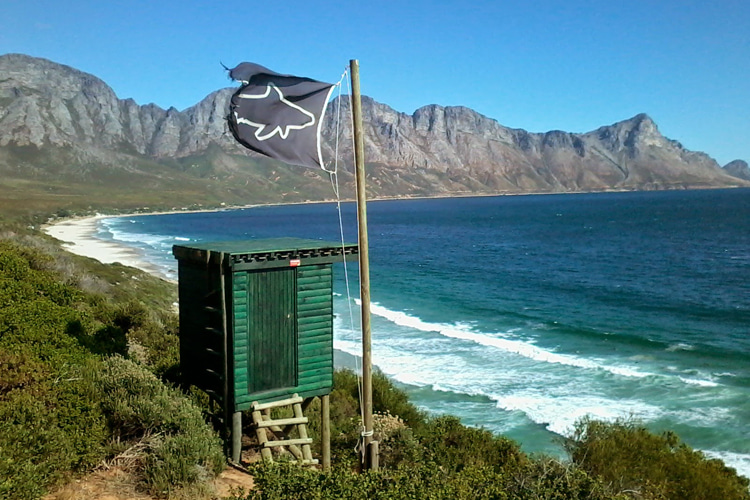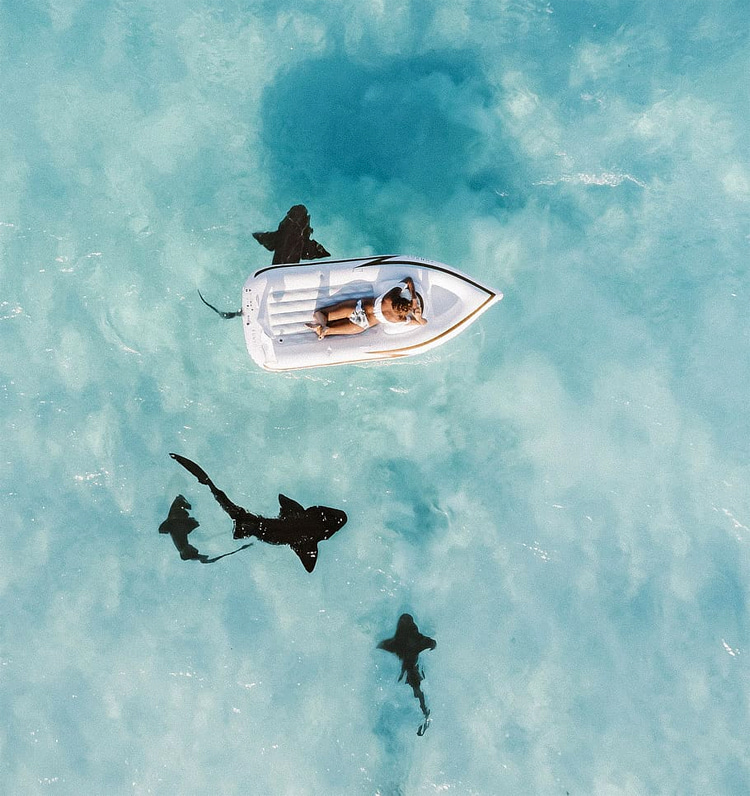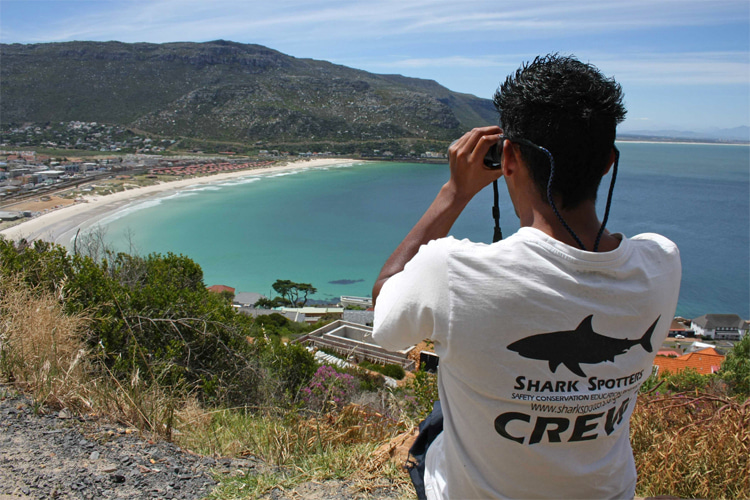A shark spotter is a person responsible for monitoring the presence of sharks near the coastline.
His or her job is to detect the ocean's predator in crowded swimming beaches and popular surf spots.
The majority of shark spotters are strategically located in elevated positions like cliffs, mountains, and high rock outcrops.
They're trained observers and can often be seen in well-known shark-infested regions or high-risk zones.
They play a fundamental role in keeping beaches and coastlines safe for beachgoers, swimmers, surfers, divers, and fishermen.
A shark spotter is often equipped with a walkie-talkie, binoculars, and polarized sunglasses.
Polarised sunglasses help them cut out the glare from the sun that is reflecting on the surface of the ocean.
Binoculars are an essential tool in their job, as they can be used to zoom in on suspicious movements down in the water.
In most cases, shark spotters can actually confirm the species in order to evaluate and assess the level of risk and danger.
Ideally, a shark spotter should use modern binoculars with adjustable features and high magnification.
Whenever they detect the presence of a shark species, they raise a visual and/or audible alarm and send a notification to the local authorities - police, civil protection, lifeguards, and emergency services.
There are also shark spotters who work and monitor the presence of dangerous shark species - like great white sharks - in the water.
They swim near the surface and look for sharks backed by support boats. In some situations, a drone flies around and above the watercraft.
One of the support boats can be equipped with 360-degree underwater cameras, which transmit video wirelessly to another team on the beach.
In-water shark spotters usually carry a spear gun or a stick to keep sharks at a distance.

Effective, Not Perfect
Shark spotting is an effective method of protecting people from shark attacks. Nevertheless, it is not perfect and can't guarantee someone's safety 100 percent.
The ability of shark spotters to detect lethal ocean predators is often negatively affected by several variables.
The distance of surfers and swimmers from the spotting site, the sunlight's glare, the water clarity, and shadows from mountains or clouds can drastically reduce the quality of the observation.
Wind, rain, and fog, as well as human error, can always occur and put people in danger.
However, the presence of shark spotters in regions known for increased shark activity has already saved lives.
Not all countries adopt shark spotting programs.
Australia is implementing surveillance methods that involve the use of drones.
Reunion Island and South Africa combine technology and the human eye for tracking near-shore shark movements.

South Africa's Shark Spotters
In South Africa, there is actually an organization called Shark Spotters.
Its goal is to provide shark mitigation measures at several beaches around Cape Town.
Shark Spotters was founded in 2004 after a series of shark bite events and increased shark sightings.
The safety education and research conversation group also tests non-lethal systems and technologies that could reduce the risk of shark attacks.
The non-governmental organization delivers real-time, accurate sightings data to the authorities and people enjoying their time at famous beaches.
Shark Spotters provides employment opportunities for previously disadvantaged South Africans and is now the primary shark safety strategy used in Cape Town.
The team of trained observers adopts continuous visual surveillance where there's a high spatial overlap between sharks and humans in and around False Bay.
Shark Spotters position themselves in high areas and scan the ocean continuously. They're in direct radio contact with another observer on the beach.
When a shark is spotted, the observer up in the mountain informs his colleague, who sets off a siren and raises a white flag.
When that happens, all beach users must leave the water and may return when the all-clear signal is given or announced.

Shark Spotting: The Four Warning Flags
Shark Spotters uses a four-flag information system to share the current shark attack status.
The green flag is raised when the spotting conditions are good, and the spotters can see clearly the area where swimmers, beachgoers, and surfers are.
The black flag is used when the spotting conditions are poor and don't allow spotters to observe shark movements in the water.
The white flag is flown when a shark is detected in the area where water users are or after a serious incident such as a shark attack.
A siren is simultaneously sounded. The spotter always takes into account the shark's distance, its swimming speed, and the direction of travel.
The white flag - with a black shark - is the international lifesaving standard to indicate a shark in the water and may remain raised for minutes or hours.
The red flag is raised to let people know that a shark has recently been spotted, that the shark activity risk is higher, or that there are known conditions for shark attack events.
